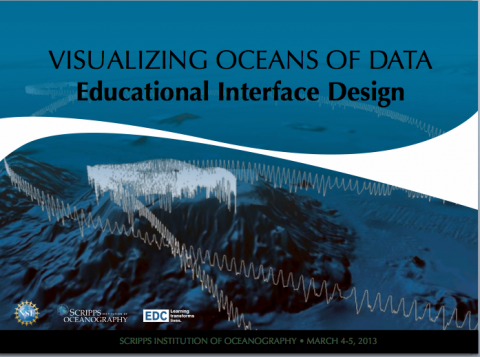Oceans of Data: What Is Needed to Support Students Learning with Large Scientific Databases?
The practice of science and engineering is being revolutionized by the development of cyberinfrastructures for accessing near real-time and archived observatory data. To inform efforts at bridging scientific cyberinfrastructures to the classroom, Education Development Center, Inc., and The Scripps Institution of Oceanography conducted a collaborative exploration focusing on the central question, “How can the design of electronic interfaces support high school students’ learning with large scientific databases?” The EDC team, lead by PI Ruth Krumhansl, reviewed and coded more than 200 articles from over 50 different journals representing diverse fields such as science and mathematics education, the geosciences, neuropsychology, computer science, statistics, and data visualization. Through advisory panel activities and targeted interviews, the project also gathered practice-based insights from recognized experts in areas including cyberinfrastructure development, software design, earth science education, geospatial reasoning, statistical reasoning, visual perception, and universal design for learning. The project report, Visualizing Oceans of Data: Educational Interface Design, synthesizes and presents key considerations and over 70 guidelines for interface designers attempting to make scientific cyberinfrastructures/databases usable and constructive tools in high school science classrooms.
- View PPT slides about the project presented to NASA
- View paper about the project
- View the project report: Visualizing Oceans of Data: Educational Interface Design

